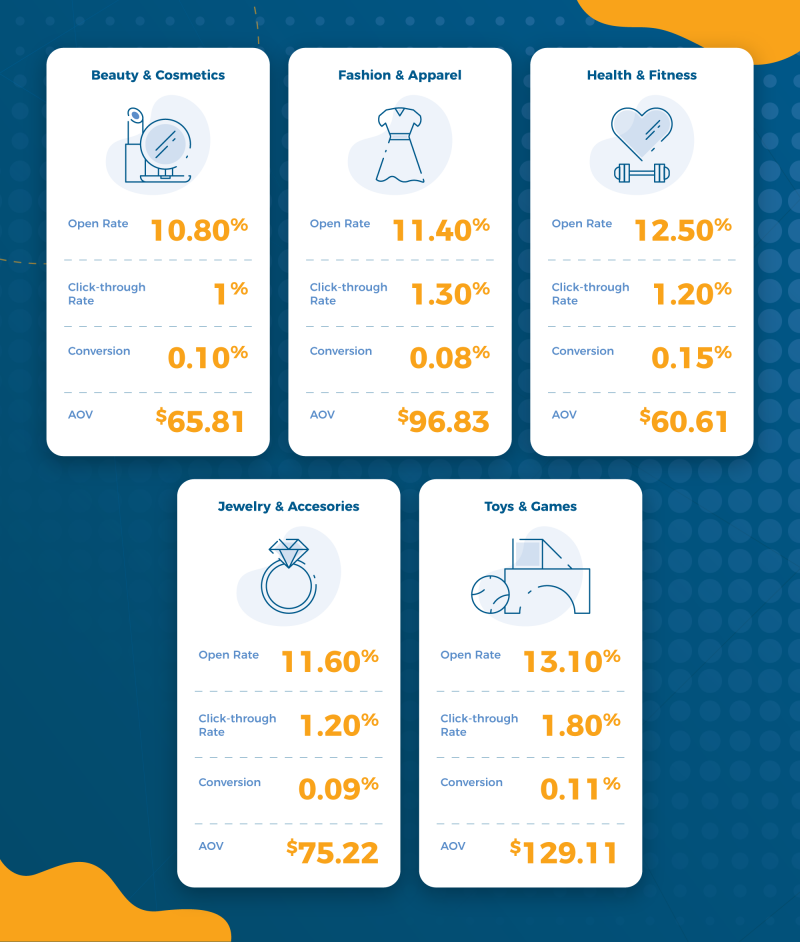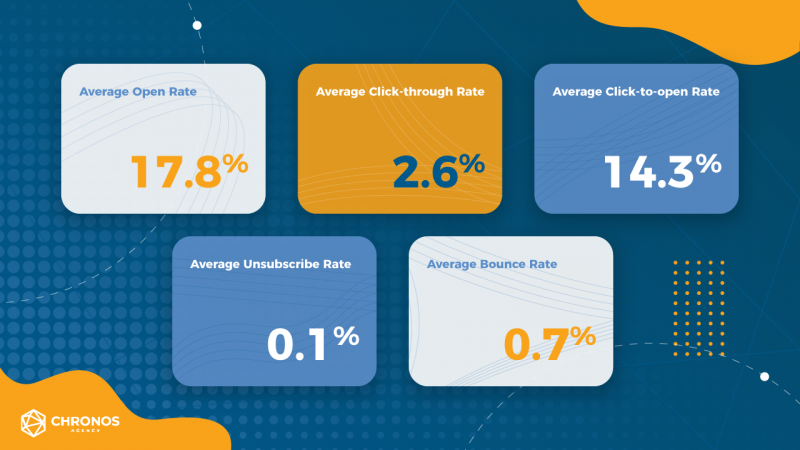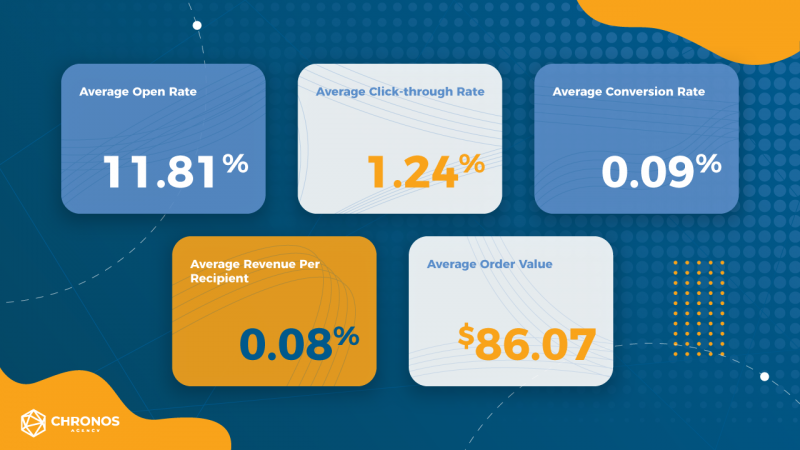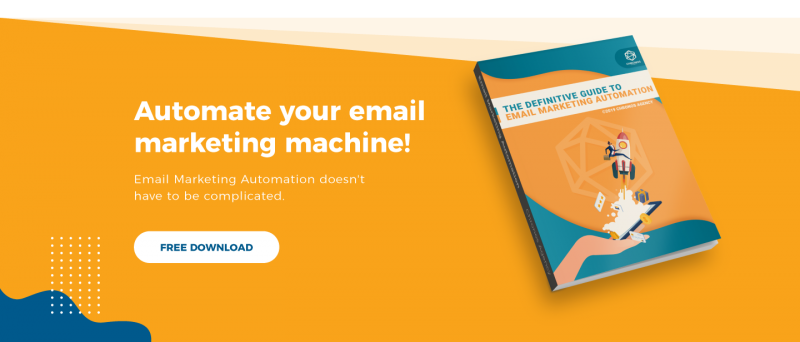With so many competitors in the eCommerce industry all investing in email marketing, how can you measure your success? It’s normal to look into what other brands are doing and how their strategies are measuring up. And it’s already the second quarter of 2020.
It would be helpful for eCommerce brands to see where they stand. So we did our research to help you know your market position! We compiled your much-needed email marketing benchmarks for 2020. Let’s get right to it then!
Why is it Important to know the Email Marketing Benchmarks?
When it comes to eCommerce email marketing, it’s all about the numbers and the insights you glean from them.
Yes, you squeeze out your creative juices when planning your campaigns. You rack your brains thinking about which segments to send specific campaigns to. And you spend a lot of time crafting your email subject lines and promo emails.
But when it comes down to measuring your success, the numbers will tell you what you need to know. When you look at your results alone, you’ll know how high your open rates, click-throughs, and revenue are. But how high is high? What are the percentages you were aiming for? This is why you have to compare your numbers with your competitors’ numbers.
Of course, it would be pretty difficult to get access to your competitors’ analytics—and highly unethical. The next best thing is to take a look at the email marketing benchmarks for 2020. With these benchmarks on hand, you’ll be able to get an idea of how effective your current strategies are. You’ll get to see your position in the market relative to your competitors and other businesses in other industries.
What are the Email Marketing Benchmarks for 2020?
Okay, so here’s the truth. Measuring the success of your email marketing strategies can vary depending on your objectives. Why? Because different metrics are related to different business goals. For example, you can have different campaigns with different objectives.
One goal can be to increase revenue using that particular promotional campaign. Another goal is to rake up engagement levels using a campaign that asks for reviews. And while there are a number of metrics to take into consideration when you look at email marketing strategies as a whole, these are the most important benchmarks to track.
Check out the data below from Campaign Monitor:
It’s important to note that these benchmarks from Campaign Monitor include all industries outside eCommerce, like advertising, media, entertainment, and education among others.
For eCommerce email marketing benchmarks, Klaviyo provides these averages:
In relation to revenue performance, Klaviyo has a comprehensive table depending on your annual revenue from email marketing. You can view it here.
Of course, benchmarks also vary depending on industry. Here’s a quick overview of email marketing benchmarks by Klaviyo for specific industries. This was last updated late 2019, and we just handpicked a few that are relevant for our clients. The full table can be found here.
 Source: Klaviyo
Source: Klaviyo
Interestingly, Beauty & Cosmetics, Fashion & Apparel, and Jewelry & Cosmetics have lower open rates compared to Health & Fitness. However, they have higher AOVs. Aside from these benchmarks, the following patterns were also observed:
- The industry with the highest open rates and click through rates is the government.
- The government also has the highest click-through rates followed by real estate, design, and construction.
- Tuesday is the best day for email marketing when it comes to highest open rates. However, it also has the highest number of unsubscribes.
- Wednesday has the lowest bounce rates, while Friday has the highest.
- Compared to the US and the UK, Australia has higher open rates, but also bounce rates.
How can you go beyond the benchmarks?
Now that you know the averages across industries, here’s what you can do to make sure that you reel in above average results.
Use Killer Subject Lines
Email marketing is more than just the core content. Subject lines are usually the gateway to an email. It depends on how attractive it is or eye-catching. But if you really want to surpass the benchmarks, forget the overused tried-and-true subject lines of the last decade—be original and creative!. Finding it difficult to come up with a subject line that works? We have a comprehensive list of do’s and don’ts for creating subject lines.
Segment, Don’t Spray
You should know by now that ‘one size fits all’ marketing doesn’t work! Your customers have different needs and wants. You have to invest in personalization so you can play according to your customers’ interests. When you segment, you’re providing them with relevant content which is more likely to convert them.
With segmentation, you can also automate the kind of emails that each segment will receive. For example, if customers viewed a certain product, this can be a trigger for them to receive a Browse Recovery email for this specific product.
Want to learn more on email marketing automation? Check out our free ebook below!
Know When to Say Goodbye
You don’t need to keep every single person on your list. Keeping inactive recipients will only further damage your performance. Remember, choose a quality list over a list with hundreds or thousands of inactive customers. Put this on your to-do list this quarter: prune your email list.
Send at the Right Time
As with other things, timing plays a really big role when it comes to reaching your audience. Send your emails too early or too late, and they’ll be buried under other emails craving for their attention. So how do you determine the right time? Test, test, and test. Check out a sample of what we did for a client here.
Klaviyo has a pretty epic feature called Smart Send Time to help you out. While it may be difficult to coordinate the difference in time zones of a large mailing list, this feature automatically adjusts it for you! This is just one of the many valuable resources from Klaviyo, making email marketing more accessible and easy to use.
So you can expect that by simply ticking this option before you launch your campaign, you’d get a lift in open rates and compare your conversion rates before your send-time optimization efforts. Ultimately, you’ll see how your email marketing revenue grows as your open rates soar!
Want to try it out for yourself? We’re a Klaviyo partner ourselves. To see how Klaviyo can help advance your email marketing, you can explore this feature further by using our affiliate link here to get you started!
Optimize the Emails Themselves
Let’s say your subject line is a sure winner. Congratulations! You got them in! Now, the journey doesn’t end. The next in line to face your customers is the email itself. Just because they open the email, it doesn’t mean that they’re sure buyers. You have to optimize the design and the copy accordingly. Know your audience, and create content that targets their needs and preferences.
Keep on AB Testing
Email marketing is not a “set it and forget it” type of channel. Remember, customers’ preferences change over time. What worked well today may not work next year. Likewise, what worked for a specific brand may not do so much for another brand. Dive into AB testing and test everything—subject lines, layout, copywriting, and even sending time. This will allow you to know your customers better so you can provide more relevant content.
Using benchmarks as reference is a useful way to evaluate your email marketing performance and strategies. Do keep in mind that these metrics vary based on your industry and your audience. However, you can use these benchmarks as your initial goals and targets for the year ahead.
Are you excited to gear up for the remaining three quarters of the year and hit numbers way past these benchmarks? Hit us up and we’ll guide you through!



